by Federico Giannini (Instagram: @federicogiannini1), published on 26/12/2016
Categories: Exhibition reviews
/ Disclaimer
Review of Marco Cornini's exhibition 'Sacred Love, Profane Love,' in Massa, Ducal Palace, through Jan. 8, 2017.
As a young boy I was an avid reader of Wolf Albert. I remember that, in an issue about fifteen years ago, a Christmas story had been published in which the farm animals, as the holidays approached, had begun to protest against Santa Claus, guilty of not having brought them, as children, the gifts they wanted. Here it is: if there is a Santa Claus of art, I would have serious grievances to make to him for bringing to us in Massa, for this holiday season, the exhibition of Marco Cornini, with the pretentious title Amore Sacro, Amore Profano, set up in the Ducal Palace, in the Hall of Mirrors and the Salone degli Svizzeri, until January 8.
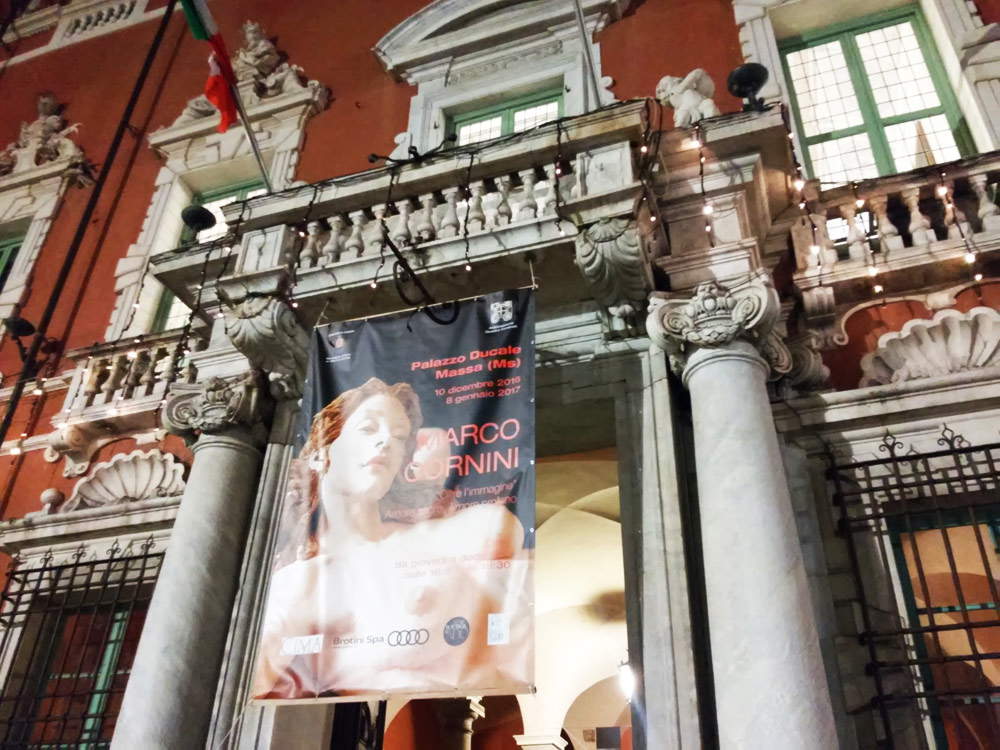 |
| Marco Cornini’s exhibition at the Ducal Palace, Massa |
Marco Cornini, for those who don’t know him, is one of the many artists swelling the ranks of the mammary gland devotees, that large swarm of painters and sculptors in love with theeternal feminine who, not content to cover their women with laudations that are limited to verbal communication, decide to consign to art their love for women by producing mountains of female nudes that crowd every country fair or any Sunday artists’ exhibition worthy of being called such. There is, in short, no exhibition of the painting class organized by the bowling alley without the display of a nice pair of round, voluminous nipples, perhaps even glittered or clumsily sprayed with fluorescent paint to give that “abstract expressionist” touch that is particularly fashionable in local festival displays. Mind you, amateurism is worthy of all admiration because it is an expression of a sincere and unconditional love of art. Problems arise when one wants to coat with a silver patina the modest, if not embarrassing, achievements of an artist who should have no greater pretensions than the encouragement of friends and relatives.
Good Cornini makes his entrance at the Ducal Palace with all thatlexical apparatus that typically accompanies artists who are poor in ideas, but who have to say something (and the more elaborate the phrasing, the more intelligent they seem: “he uses a language ancient in technique assembled with modern taste that employs the customs of everyday life to construct micro-stories of the ordinary,” “Cornini’s sculptures affirm unusual values of a sculptural narrative that knows how to mix well topicality and ancient and noble lessons,” “the central theme of his work is the human being, with a particular attention to the psychological investigation of the correlations in the fabric of feelings with a propensity to grasp the existential aspects related to contemporary life”). But most of all, Cornini presents himself proudly clinging to the period judgments of Mario De Micheli, who by some unspecified astral conjuncture noticed him in his early days in the 1980s: it is a demonstration of how the dogma of theinfallibility of the critic or art historian (which often stands to the student of art history as the dogma of papal infallibility stands to the Catholic) is the worst error into which young people approaching the subject can fall, often guilty of adoring critics and art historians, notably those of the past, to the point of bordering on devotion.
In other words, it is not clear what Mario De Micheli could have seen of interest or even excitement in Marco Cornini. The Palazzo Ducale exhibition is a vacuous parade of soulless mannequins, in the true sense of the word: Cornini’s women have the same expressiveness as clothing store mannequins. Little white, naked women, all the same: slender, third breasts sometimes abundant, nipples wide and well-rounded, hair almost always shoulder-length and parted in the middle, ubiquitous Brazilian-style tuft of pubic hair. Women who evidently correspond to the female type that populates the imagination of our sympathetic breast singer. Variations on the theme, almost none: just the poses and the color of the heeled flip-flop sandal of a Parmesan housewife on vacation in Marina di Carrara change (because Cornini’s female nudes, in the vast majority of cases, wear footwear: it is theporn movie aesthetic that becomes painted clay).
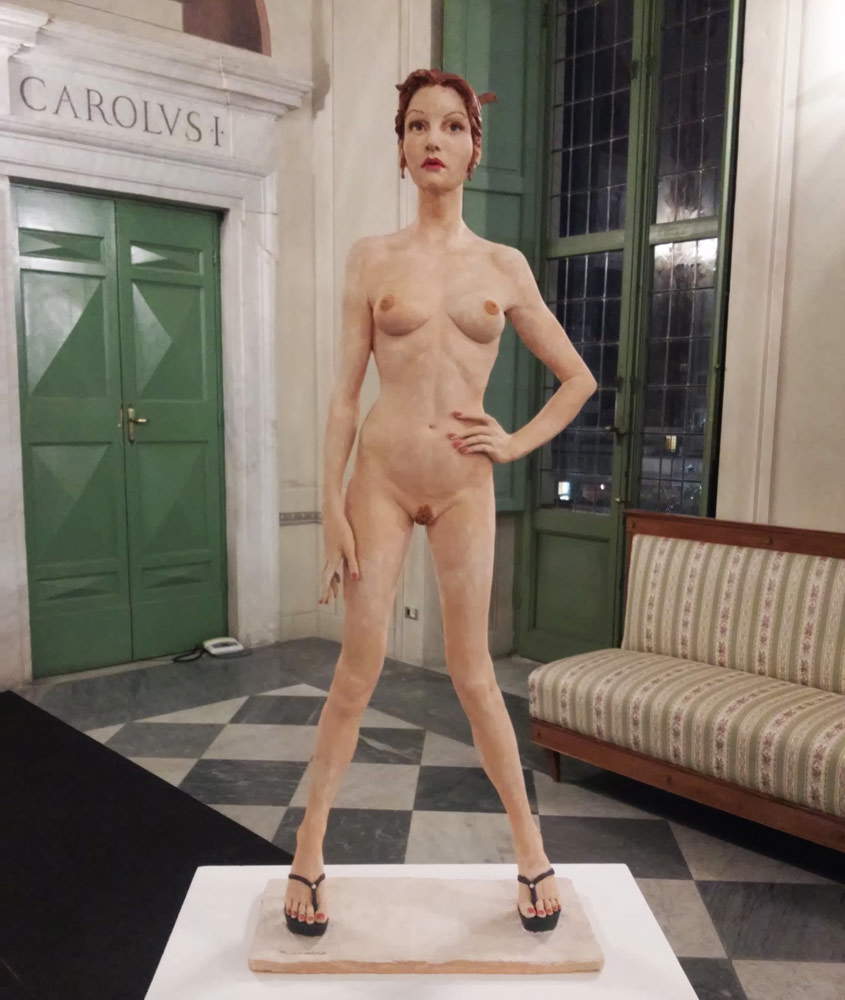 |
| Marco Cornini, Between Me and Myself (2012; terracotta, 38 x 126 x 92 cm) |
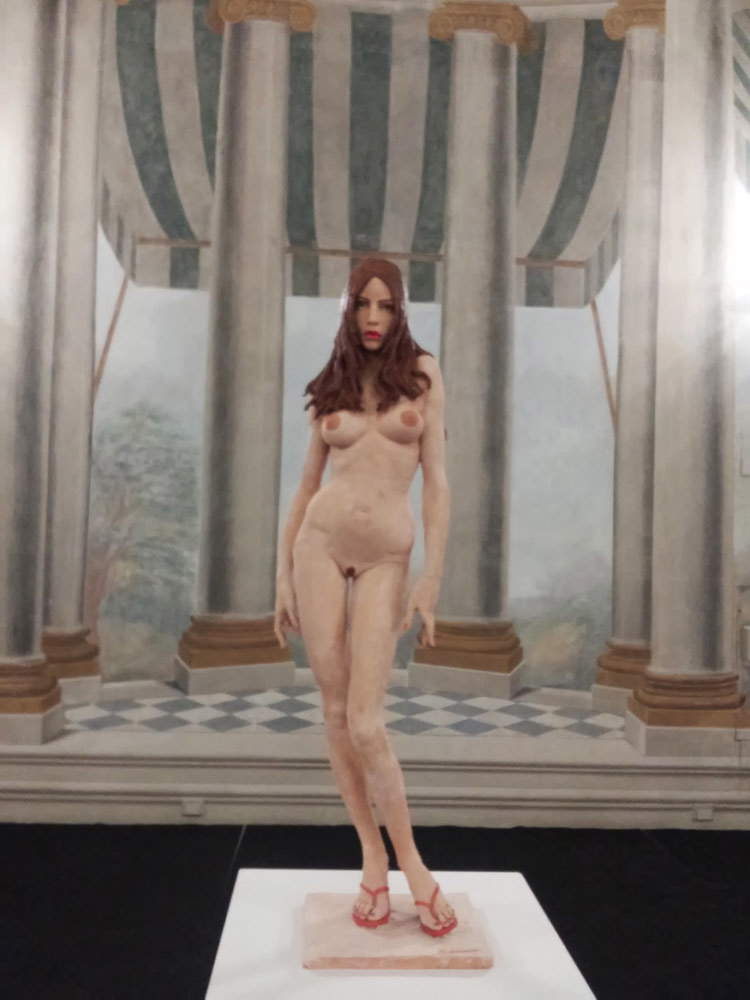 |
| Marco Cornini, Memories (2014-2015; terracotta, 124 x 38 x 28 cm) |
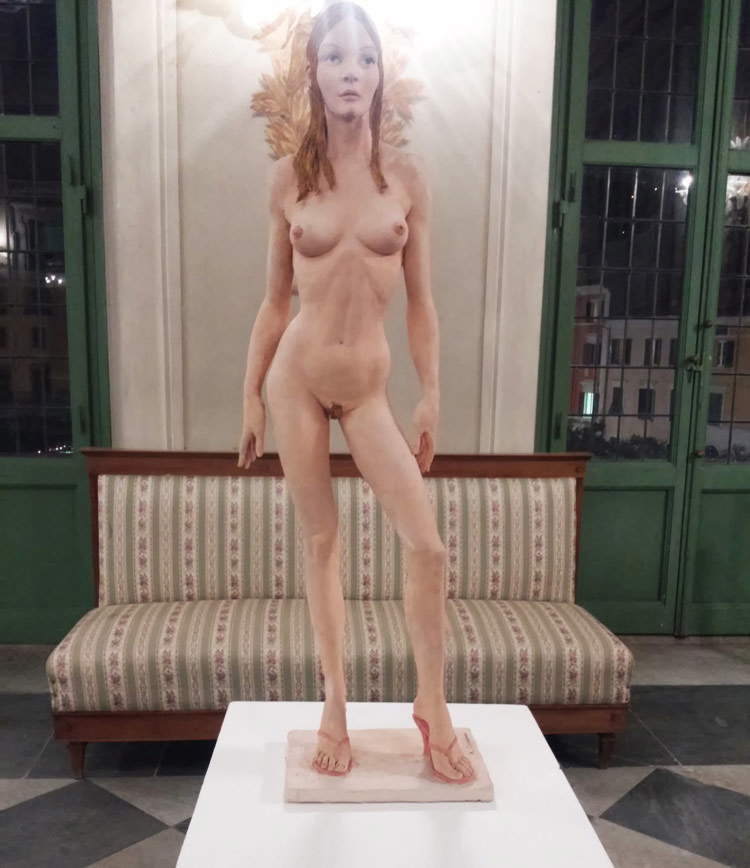 |
| Marco Cornini, Girl with a Pink Sandal (2004; terracotta, 99 x 36 x 19 cm) |
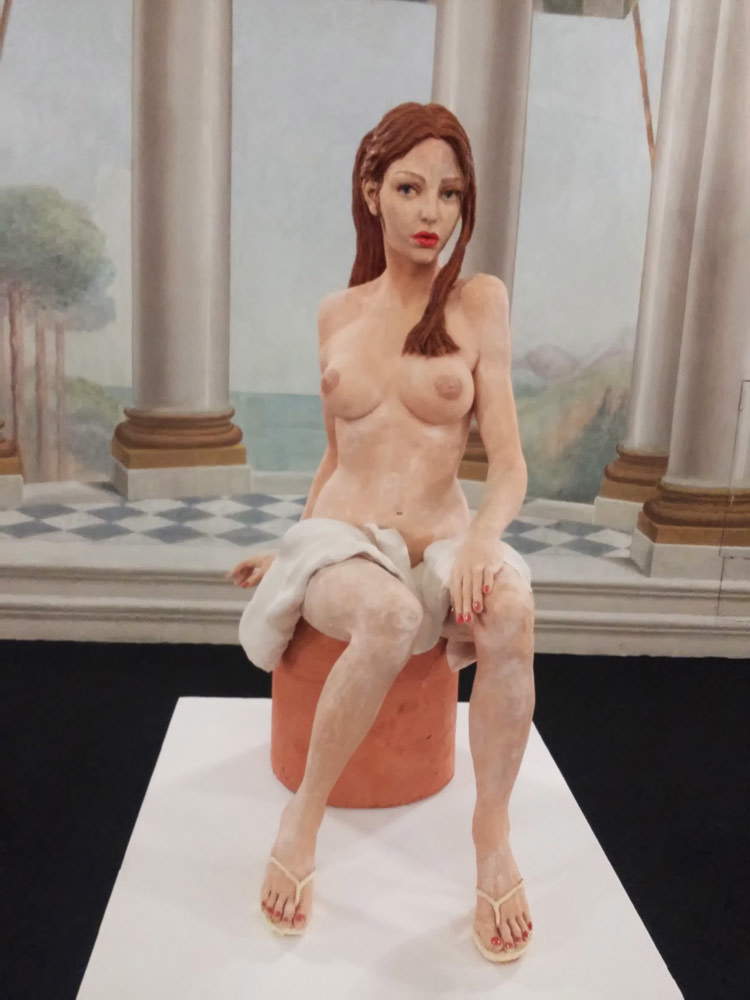 |
| Marco Cornini, Stay with me (2014-2015; terracotta, 76 x 33 x 49 cm) |
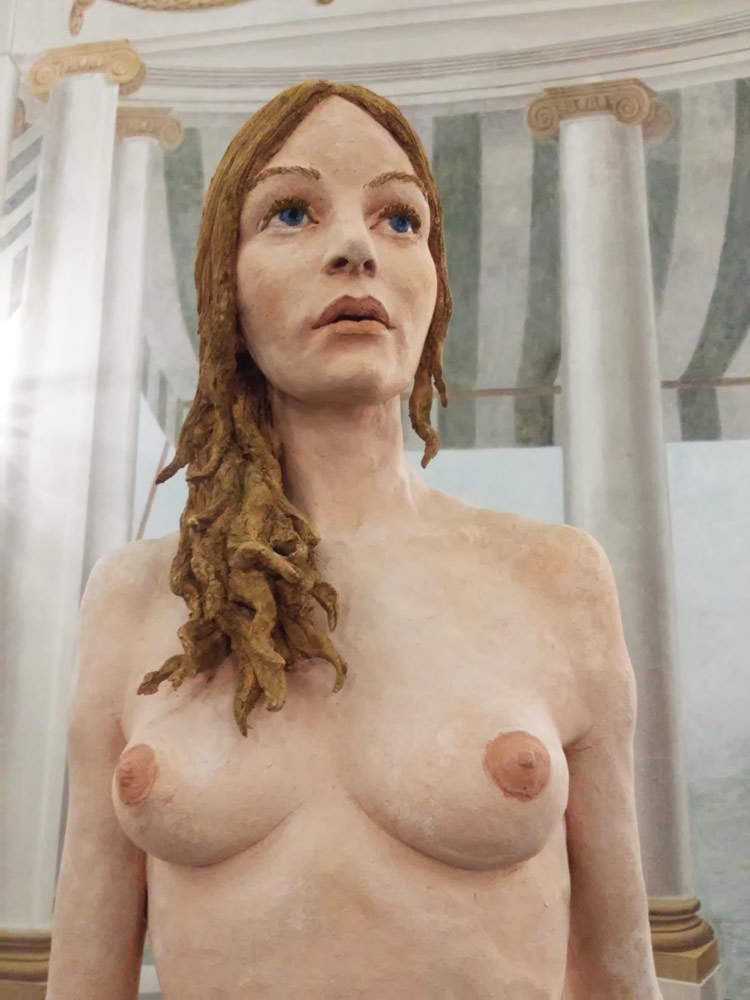 |
| Detail |
At most, it is possible to encounter, in the Massese exhibition, some young lady lying languidly sunbathing on the beach, a model bathing in oil, or a discreet mother walking a little girl with obvious hyperthyroidism problems, or even an awkward encounter between two lovers that rather than an embrace resembles a catch move. It must be said that Cornini remains well faithful to one characteristic: the absence of any glimmer of feeling from all, all, all the protagonists, whether women or men, of his terracottas. Glances lost in emptiness, absolute absence of spontaneity, inability to communicate even the slightest motion of the soul, a tabula rasa in the minds and hearts of these poor beings deprived of their sensitivity. Can art be so totally devoid of feeling? While waiting to answer the question, the task of decoding the brain activity of Cornini’s weasels, assuming there is any, falls to the titles of the works. Designations such as Stay with me, She walked sure, When a glance between us was enough.... , You were shyly nonchalant, I like the way you looked at me should help the discouraged visitor understand the meaning of the work. Of course, one has to work quite a bit of imagination to imagine the “micro-stories” that Cornini would like to tell, with the result that our artist is much closer than one might think to the conceptual with which he would like to have nothing to do.
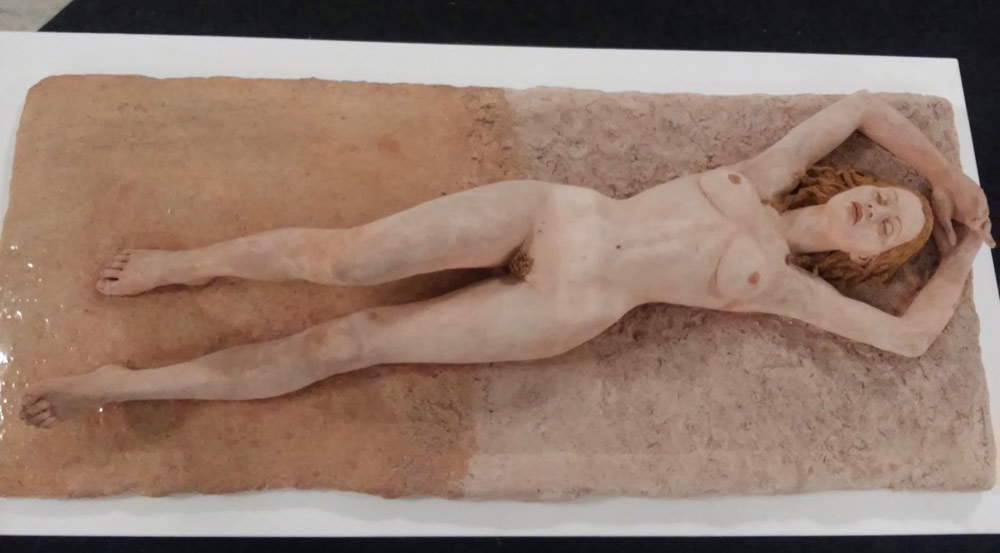 |
| Marco Cornini, Beach (2006; terracotta, 21 x 114 x 50 cm) |
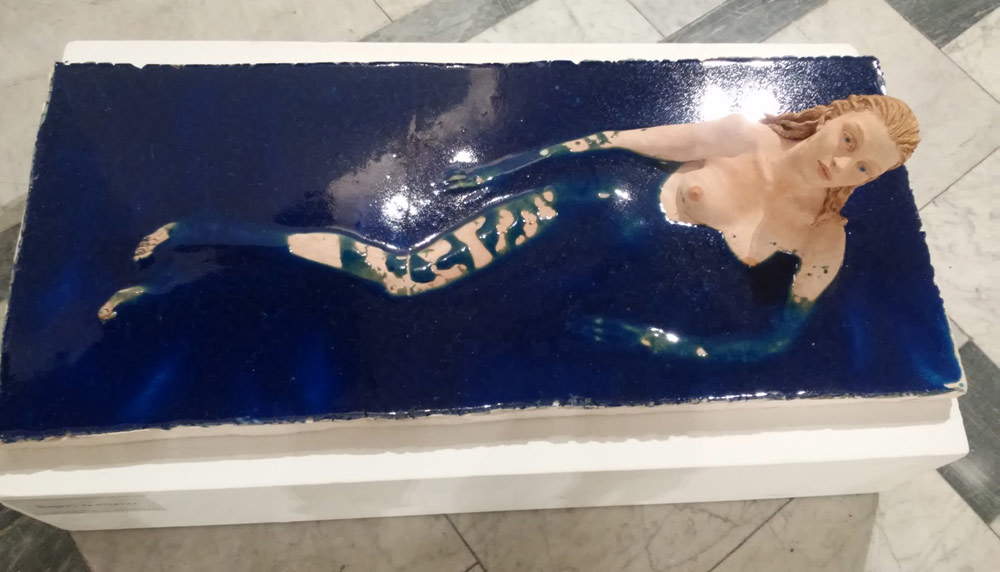 |
| Marco Cornini, Night Bathing (2013; terracotta, 23 x 109 x 49 cm) |
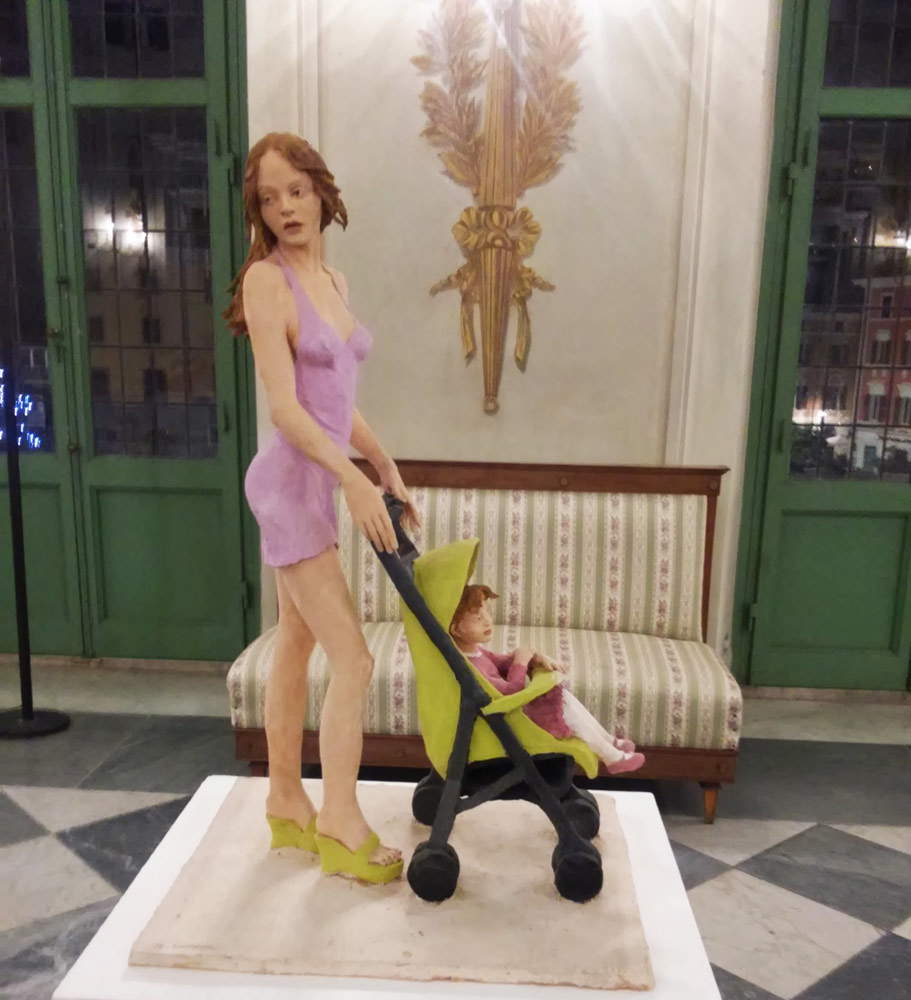 |
| Marco Cornini, Strolling (2007; terracotta, 91 x 57 x 49 cm) |
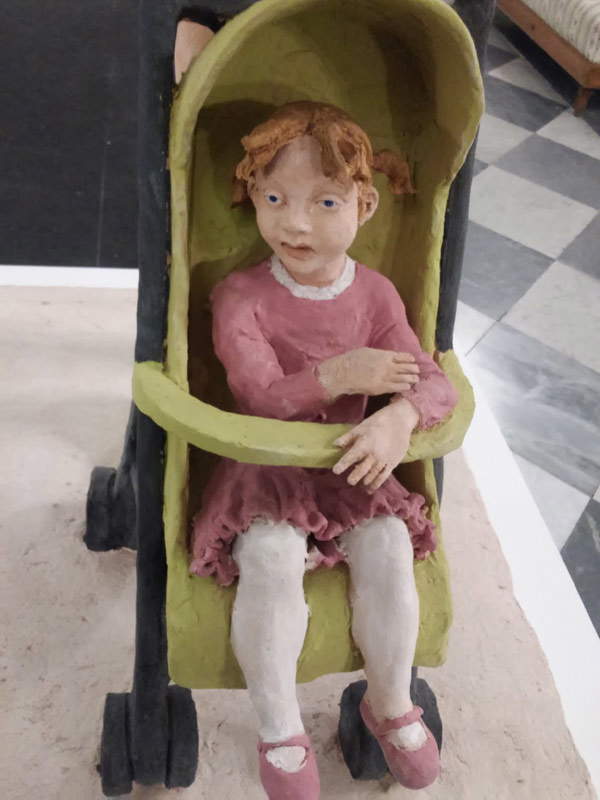 |
| Detail of the little girl in “A passeggio” |
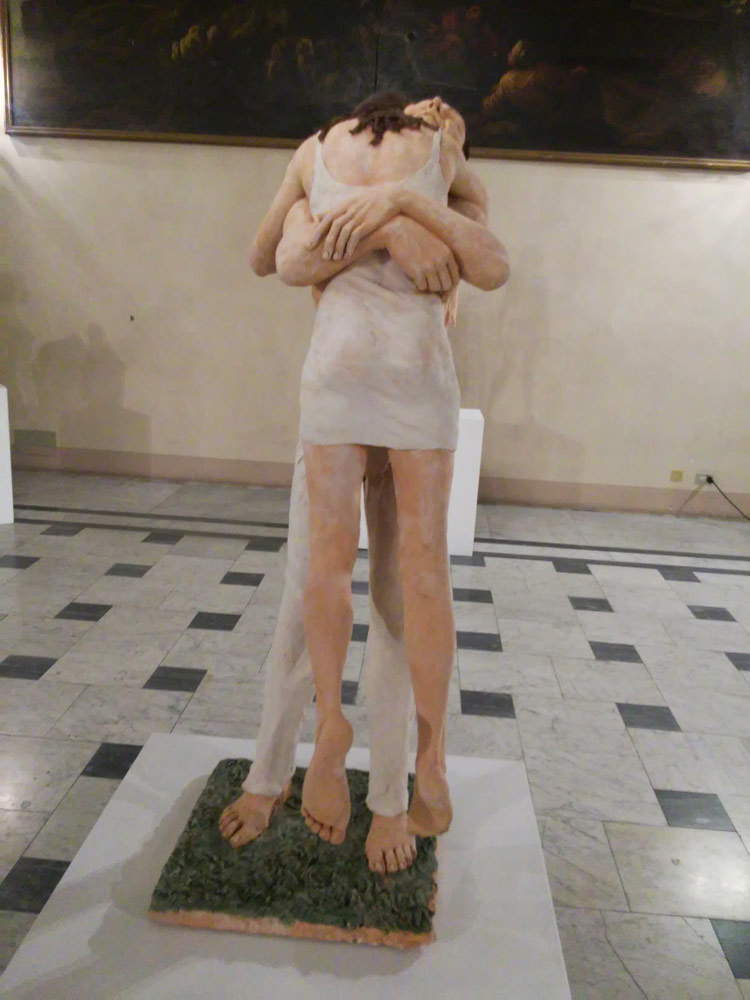 |
| Marco Cornini, Embrace (2012; terracotta, 97 x 62 x 33 cm) |
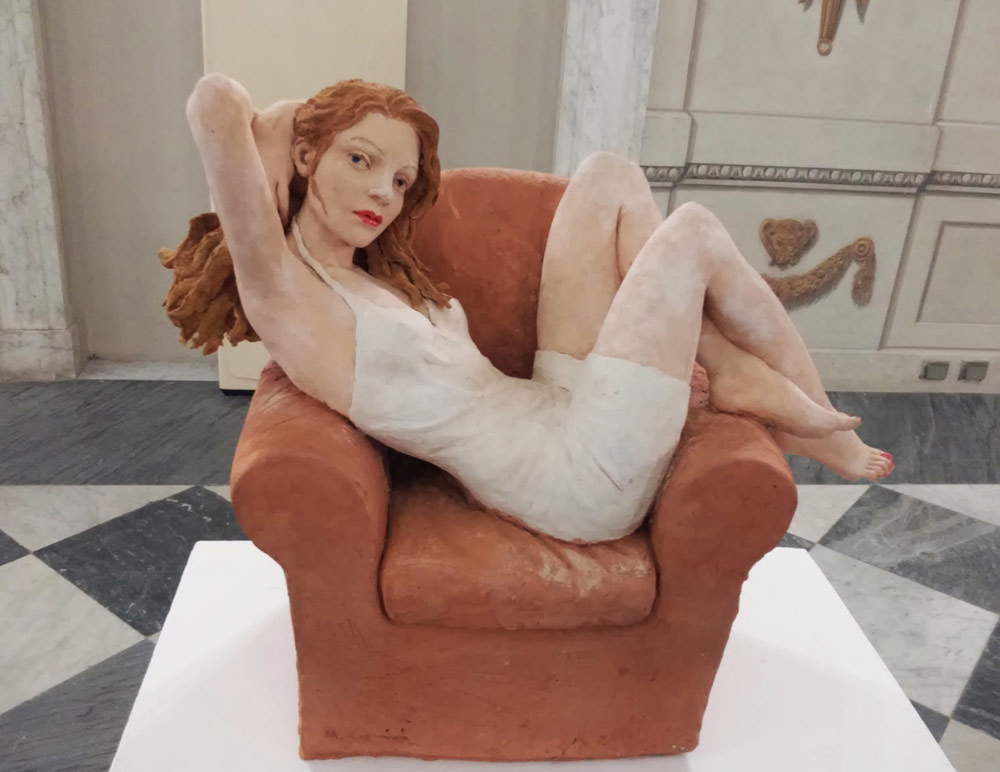 |
| Marco Cornini, I like the way you looked at me (2009; terracotta, 53 x 64 x 29 cm) |
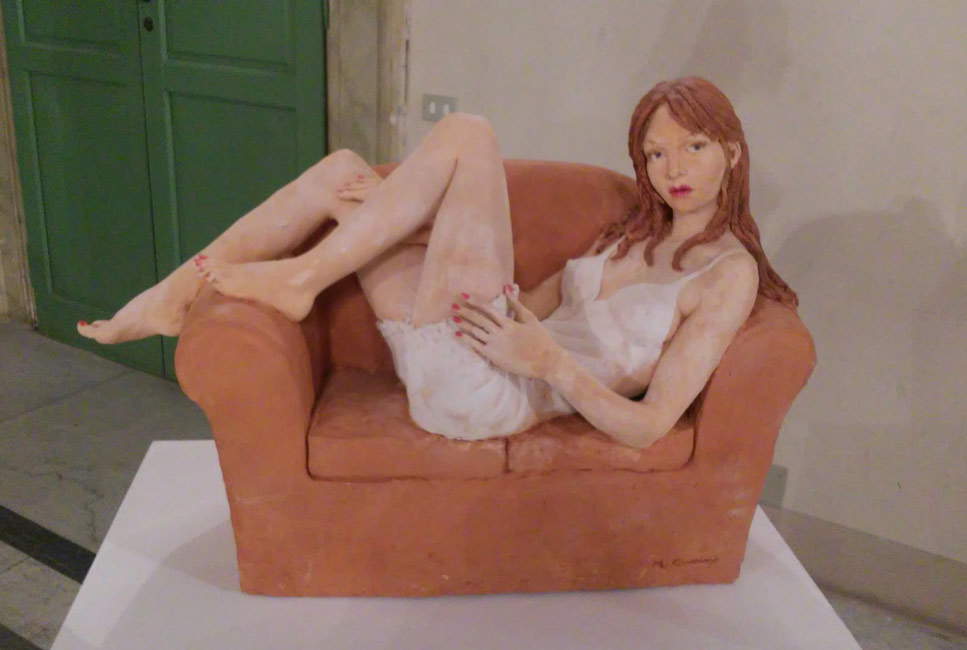 |
| Marco Cornini, When a look between us was enough (2010; terracotta, 55 x 78 x 35 cm) |
There is no need, then, to discomfort great names, starting with that of Titian evoked by the title of the exhibition, continuing with that of Arturo Martini with whom the introductory text attempts a bold, improbable and embarrassing comparison, and ending with that of Fabrizio De Andrè, suggested in a contribution quoted at the opening of the itinerary, by Luca Beatrice (who had already given enough for this year with the exhibition on Andy Warhol in Genoa), in which it is intended to inform the unfortunate visitor that Cornini’s figurines might as well be whores like those sung by the great Genoese poet. Please. Leave the big names alone, with whom Cornini shows not the slightest common trait, and leave the high dignity of the meretriciousness alone, which can only be harmed by an art populated by little women who look as if they came out of illustrations of fourth-rate editorial byproducts, by an art for serial and compulsive onanists who know the woman’s body only by hearsay.
In short: in the end we leave the Hall of Mirrors and the Hall of the Swiss frustrated at having wasted a half-hour that we would have been better off devoting to Christmas shopping. Or at most to visit an honest exhibition of handcrafted terracotta nativity scenes, which very often, in terms of quality, rendering, technical skill, spontaneity, refinement and feeling, are far superior to the entire selection of Marco Cornini’s works on display at the Ducal Palace.
Warning: the translation into English of the original Italian article was created using automatic tools.
We undertake to review all articles, but we do not guarantee the total absence of inaccuracies in the translation due to the program. You can
find the original by clicking on the ITA button. If you find any mistake,please contact us.








































